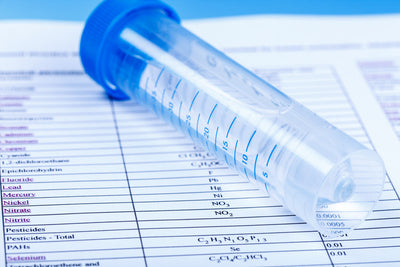Wendy Spicer, M.S. | Scientific Contributor
***Updated 10/27/2022 to include recent health studies and regulatory status.
If you have seen the movie Erin Brockovich, you are familiar with chromium 6 (also known as hexavalent chromium and chromium VI). The film tells the story of a legal clerk turned activist who uncovers that a California utility company, Pacific Gas and Electric (PG&E), was knowingly dumping chromium 6 waste and contaminating the local water supply. Brockovich’s law firm, Masry and Vititoe, represented over 600 clients in a lawsuit against PG&E which settled for $333 million dollars in 1993. Despite the success and fame of this story, chromium 6 water contamination remains largely unregulated and problematic across the United States. The Environmental Working Group estimated that in 2015, water supplies serving over 218 million Americans were contaminated with chromium 6.
What Is Chromium?
It is important to note that there are 2 very different forms of chromium that are often grouped together when reporting contaminant levels. These two different types vary based on their oxidation states, meaning that they differ in the number of electrons surrounding the atom’s nucleus. Chromium (III), or trivalent chromium is a naturally occurring element that is an essential nutrient, and is beneficial, not toxic to humans. In fact, chromium(III) plays a role in glucose, fat, and protein metabolism by increasing the effect of insulin.
However, chromium 6 is the highly-toxic form of chromium. Industrial discharge is the largest source of chromium 6 in our environment and is released into air and wastewater by metal processing facilities, tannery facilities, chromate production, stainless steel welding, ferrochrome production, and pigment production. The major way that most people are exposed to chromium 6 is through contaminated food and water.
What Are The Adverse Health Effects Of Chromium in Water?
There is strong evidence that chromium 6 is a human carcinogen. The most recent EPA draft toxicity review states "Cr(VI) is likely to be carcinogenic to humans by the oral route of exposure.”
Specifically, this study suggests that chromium 6 causes stomach cancer in humans, consistent with previous tumor results reported in rodent studies. Chromium 6 exposure is also known to cause multiorgan toxicity such as kidney damage, allergy, and asthma. This study compared the toxicity of chromium 3 to chromium 6 in kidney cells, and scientists observed toxic effects in cells treated with chromium 6 but not with chromium 3.
In addition to being a likely carcinogen, the most recent EPA draft toxicity review discusses negative health effects affecting organ systems including gastrointestinal, liver, immune, hematologic, as well as the male reproductive system. In addition, the developing fetus is considered especially susceptible because Chromium 6 was determined as a likely cause of developmental toxicity in humans.
Chromium 6 is also a known endocrine-disrupting chemical, and this study documented that environmental exposure to chromium 6 caused detrimental reproductive effects in women and negative health effects in infants in California. In fact, the scientists reported that women with occupational chromium 6 exposure experienced infertility, pregnancy loss, spontaneous abortion, and stillbirth.
Breathing high levels of chromium 6 can cause irritation to the lining of the nose, and nose ulcers. Lung and respiratory cancers are more common in industrial workers (where it is more likely to be inhaled) while gastrointestinal tumors are more common in humans and animals exposed to chromium 6 in drinking water. Accidental or intentional ingestion of extremely high doses of chromium 6 compounds can cause acute respiratory, cardiovascular, gastrointestinal, hematological, hepatic, renal, and neurological distress which may result in death.
Is Chromium 6 Regulated?
Chromium 6 in drinking water is not currently regulated by any State or at the Federal Level. However, the California Water Resources Control Board’s Drinking Water Program is the first in the nation to unveil a proposal to set a “maximum contaminant level” (MCL) of 10 parts per billion, or ppb, in water. The board is also proposing to set the “detection limit,” which would trigger reporting, at 0.05 ppb. The current Public Health Goal in California (the level below which there is no expected health issues) for Chromium-6 is 0.02 ppb.
Other Articles We Think You’ll Enjoy:
What You Need To Know About Chromium 6How To Filter Chromium 6 From Water
How To Tell If Your Home Has Lead Pipes





